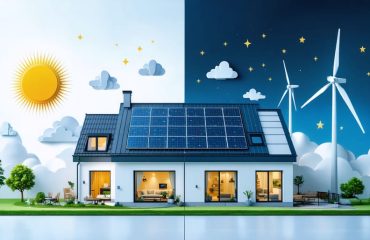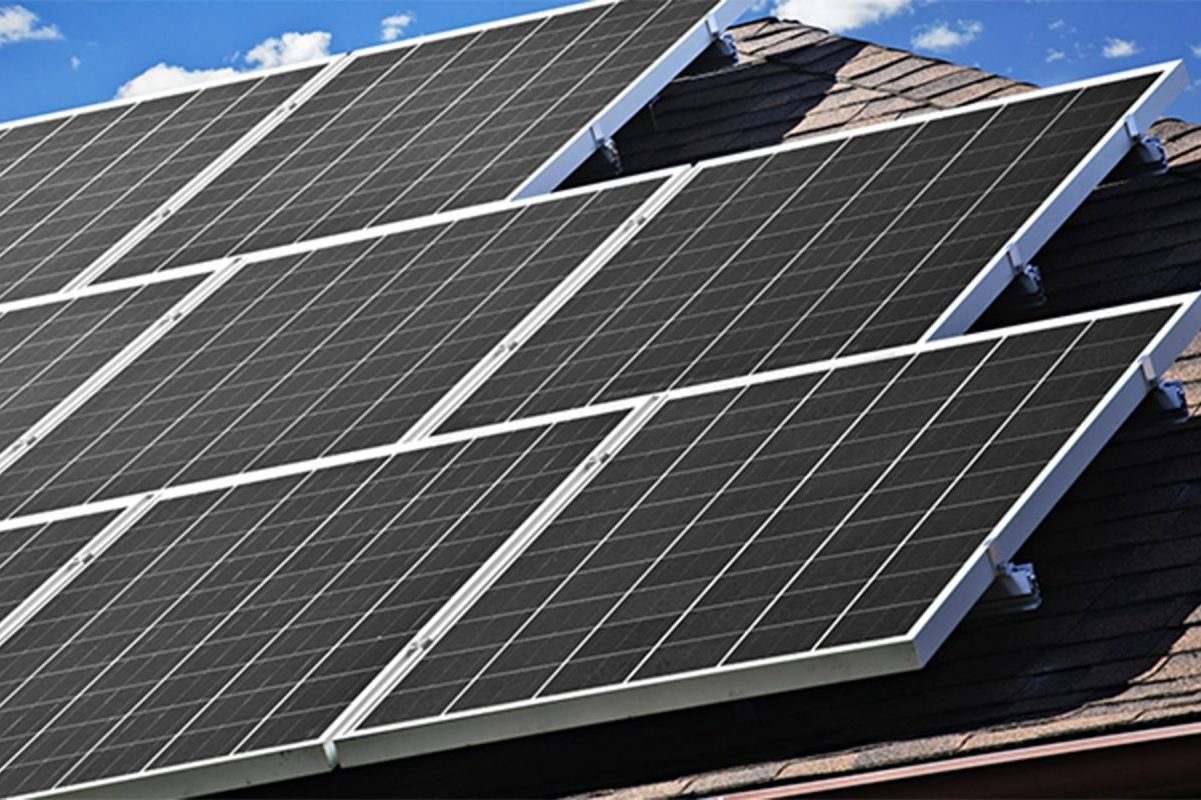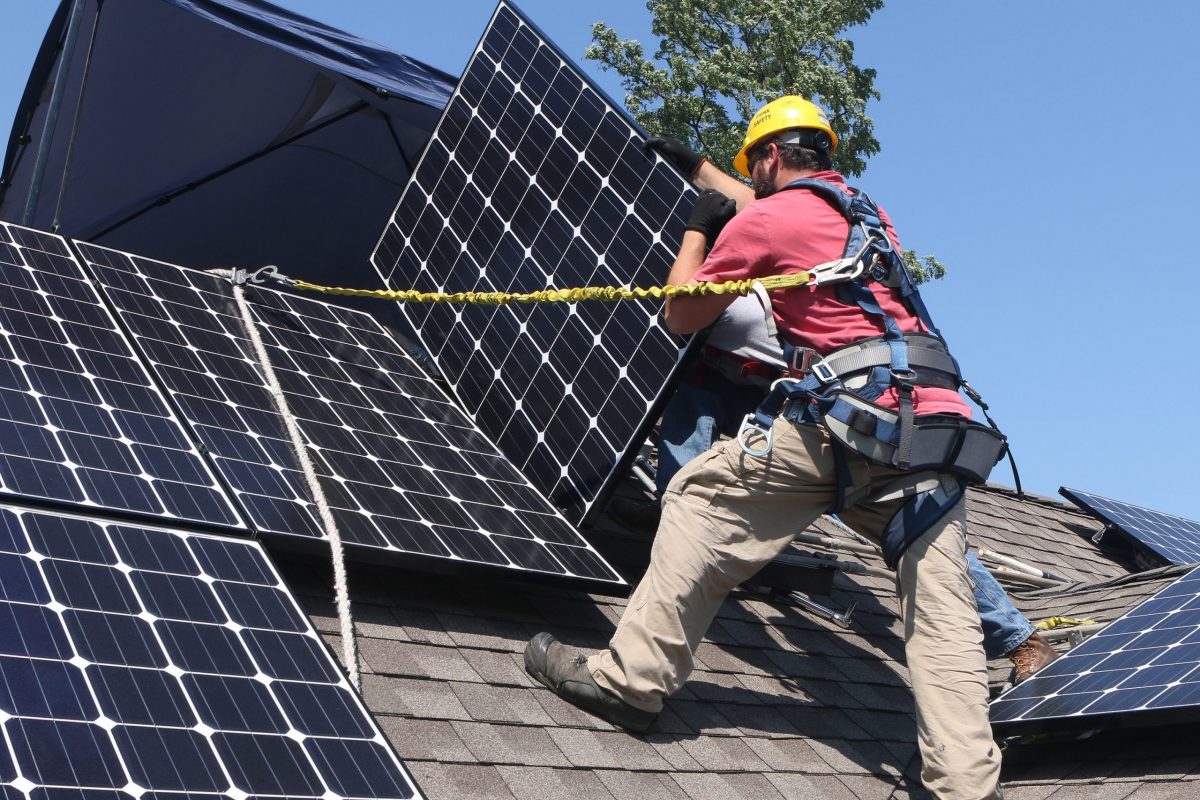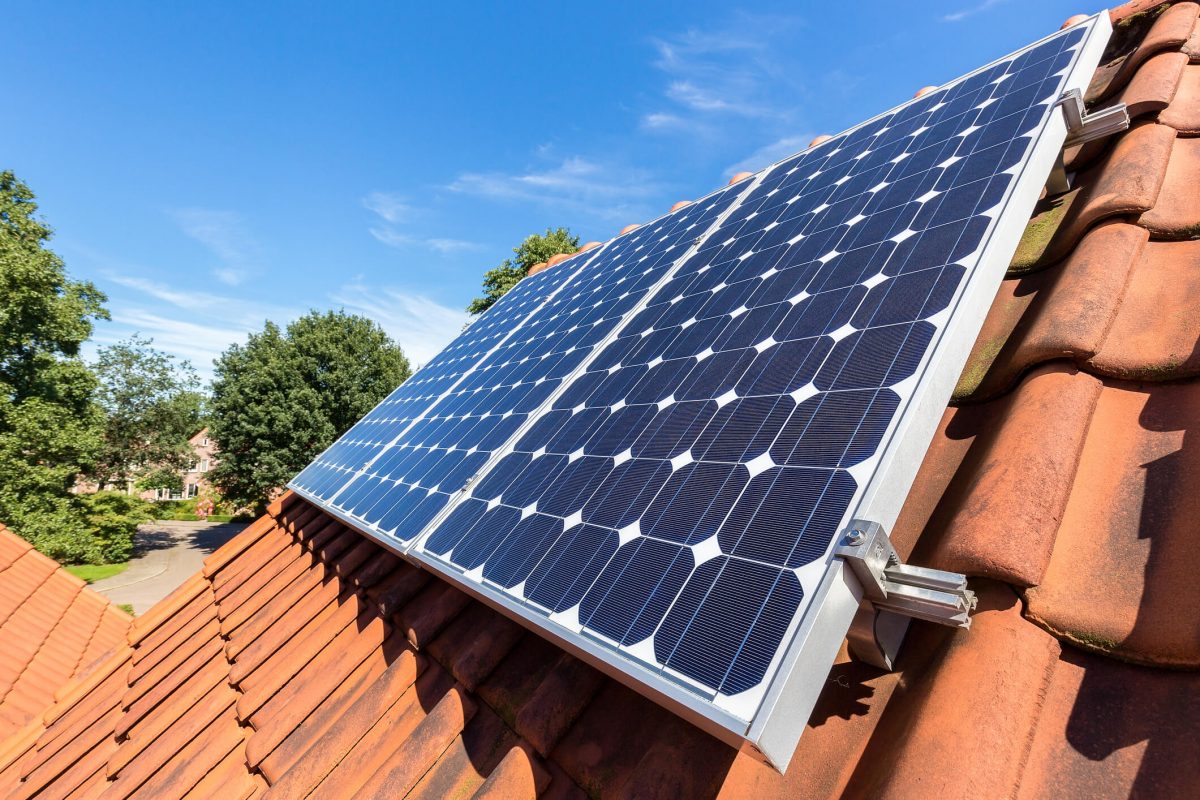Revolutionize your home’s energy independence with hybrid solar generators – the cutting-edge solution that combines solar power with traditional backup systems to deliver reliable, sustainable energy 24/7. These innovative systems seamlessly integrate photovoltaic panels with battery storage and conventional generators, creating a robust power ecosystem that adapts to your energy needs in real-time. Unlike standalone solar setups or traditional generators, hybrid systems offer the best of both worlds: clean, renewable energy harvested from the sun during peak hours, complemented by dependable backup power when needed.
For homeowners seeking energy security and reduced utility bills, hybrid solar generators represent a strategic investment in both environmental sustainability and financial independence. These systems automatically switch between power sources, ensuring continuous electricity supply during grid outages while significantly reducing your carbon footprint and monthly energy costs. Whether you’re looking to power your entire home, create an off-grid solution, or simply establish a reliable backup system, hybrid solar generators offer a versatile, future-proof approach to residential energy management.
How Solar-Geothermal Hybrid Systems Work
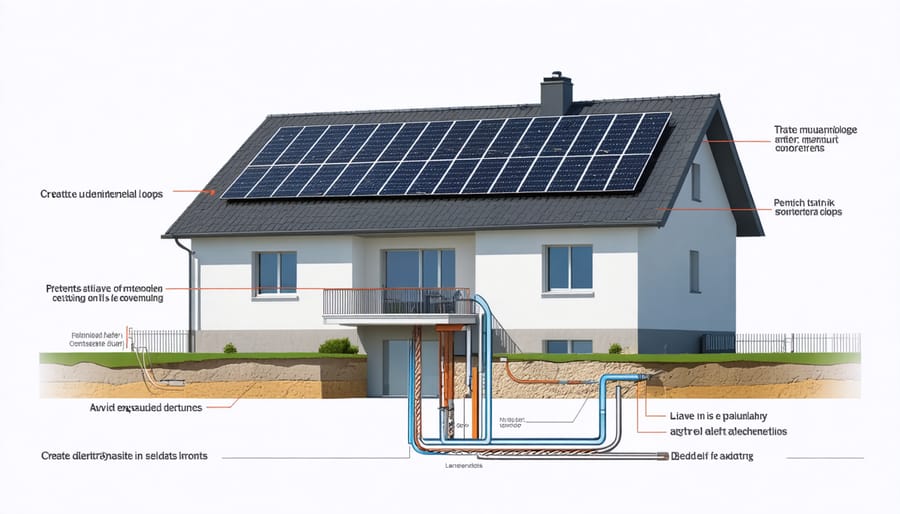
Solar Component
The solar component of a hybrid solar generator consists of solar panel systems that capture sunlight and convert it into usable electricity. These panels, typically installed on your roof or in a sunny area of your property, are made up of photovoltaic cells that work silently throughout the day to generate clean, renewable energy.
Modern solar panels can convert 15-22% of sunlight into electricity, providing a reliable power source during daylight hours. The generated electricity can either be used immediately, stored in batteries for later use, or fed back into the power grid, depending on your setup and local regulations.
The number and size of panels needed depend on your energy requirements, available space, and local climate conditions. Most residential installations range from 3kW to 10kW systems, with each panel typically producing between 250-400 watts under optimal conditions. The panels require minimal maintenance, usually just occasional cleaning and inspection, making them a hassle-free component of your hybrid system.
Geothermal Component
The integration of geothermal heat pump systems adds another layer of efficiency to hybrid solar generators by tapping into the Earth’s constant underground temperature. This component utilizes a series of underground pipes filled with a heat-transfer fluid to exchange heat with the soil, providing both heating and cooling capabilities throughout the year.
During winter months, the system extracts heat from the ground to warm your home, while in summer, it removes excess heat from your living space and deposits it underground. This process works seamlessly with solar panels, using the generated electricity to power the heat pump’s compressor and circulation systems.
The geothermal component operates consistently regardless of weather conditions, making it an ideal complement to solar power. When combined, these systems can reduce your home’s energy consumption by up to 70% compared to traditional heating and cooling methods. The underground loops typically last for decades with minimal maintenance, providing reliable performance and steady energy savings year after year.
Benefits for Homeowners
Year-Round Energy Production
A hybrid solar generator’s unique advantage lies in its ability to deliver reliable power throughout the year, regardless of weather conditions or time of day. By combining solar panels with a backup power system, typically a battery bank and traditional generator, these systems ensure your home stays powered even when the sun isn’t shining.
During sunny days, the solar panels generate electricity while simultaneously charging the battery storage system. When clouds roll in or night falls, the system automatically switches to battery power, providing seamless energy delivery. If battery levels run low during extended periods of unfavorable weather, the backup generator kicks in to maintain power supply and recharge the batteries.
This three-tier approach eliminates the common concern about solar power’s reliability. The system’s smart controller manages the power flow between components, optimizing energy usage and ensuring you’re never left in the dark. Whether it’s the middle of summer or the depths of winter, a hybrid solar generator maintains consistent performance, giving homeowners peace of mind and reliable access to clean energy year-round.
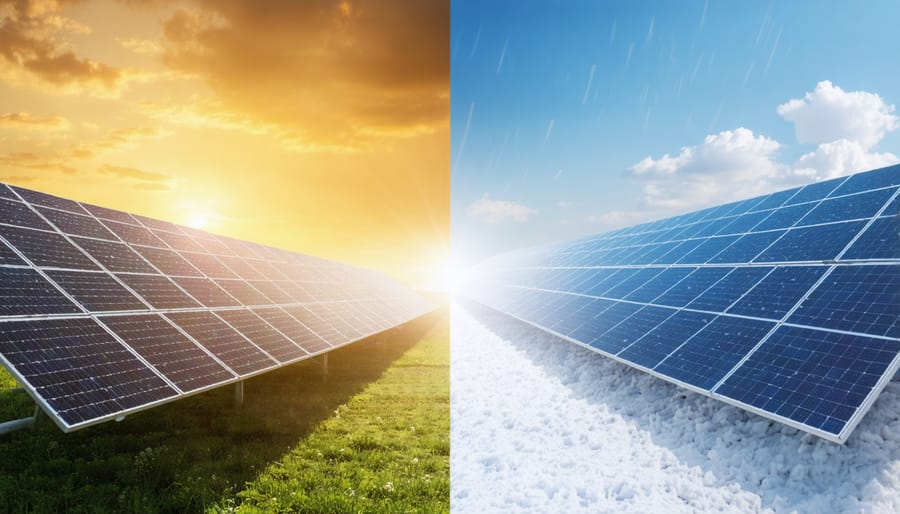
Cost and Energy Savings
A hybrid solar generator can significantly reduce your monthly energy bills while providing reliable power for your home. Most homeowners see a 50-70% reduction in their utility costs after installation, with some achieving even greater savings during peak solar production months. When combined with other energy efficiency improvements, these systems can pay for themselves within 5-7 years.
The energy savings are particularly impressive during daylight hours when solar production is at its maximum. The hybrid system’s smart technology automatically switches between solar and grid power to optimize energy usage, potentially saving an additional 15-20% compared to traditional solar setups. During power outages, the battery backup system eliminates the need for expensive fuel-powered generators, providing additional cost savings.
Many states offer tax incentives and rebates for installing hybrid solar systems, which can reduce initial costs by 26-30%. When factoring in rising utility rates and the system’s 20-25 year lifespan, homeowners can expect to save $20,000 to $30,000 over the lifetime of their hybrid solar generator.
Environmental Impact
Hybrid solar generators significantly reduce your carbon footprint by harnessing clean, renewable energy from the sun. Unlike traditional gas generators, these systems produce zero direct emissions during operation, helping combat climate change. A typical hybrid solar setup can prevent up to 3-4 tons of CO2 emissions annually – equivalent to planting about 100 trees. The system’s battery components are also increasingly environmentally friendly, with many manufacturers using recyclable materials and offering take-back programs. By combining solar power with efficient battery storage, these generators maximize renewable energy usage and minimize waste, making them an environmentally responsible choice for both backup power and daily use. The long lifespan of modern hybrid systems, often 20-25 years, further enhances their sustainability credentials by reducing the need for frequent replacements.
Installation and Maintenance

Installation Requirements
Before installing a hybrid solar generator system, your property needs to meet several basic requirements. First, assess your available roof space or ground area for solar panels – typically, you’ll need 200-400 square feet of unshaded space, depending on your energy needs. The roof should be in good condition and able to support the additional weight of the solar panels.
Your property should also have adequate space for the battery storage system and inverter components, usually in a garage, basement, or dedicated utility room. These areas need to be clean, dry, and well-ventilated, with temperatures typically between 50-85°F (10-29°C) for optimal performance.
The installation process generally takes 2-5 days and involves:
– Site assessment and system design
– Obtaining necessary permits and approvals
– Installing mounting hardware and solar panels
– Setting up battery storage systems
– Installing inverters and control systems
– Connecting to your home’s electrical system
– Final inspection and system activation
Professional installation is strongly recommended, as proper setup ensures optimal performance and safety. Your installer should be certified and experienced with hybrid systems. They’ll handle all necessary paperwork, including permits, utility company agreements, and potential incentive applications.
Remember to check local building codes and homeowners’ association regulations before beginning the installation process, as these may affect system placement and design.
Maintenance Tips
Keeping your hybrid solar generator in top condition doesn’t require complex technical knowledge, but regular maintenance is essential for optimal performance. Every three months, inspect and clean the solar panels to remove dust, leaves, and debris that can reduce efficiency. Simply use warm water and a soft brush or cloth – avoid harsh chemicals that might damage the panels.
Check the battery system monthly, ensuring connections are tight and free from corrosion. Most hybrid systems have battery monitoring displays; familiarize yourself with normal readings so you can spot potential issues early. Keep the battery area well-ventilated and clean.
Annually, schedule a professional inspection to check the inverter, wiring, and overall system performance. This helps prevent unexpected breakdowns and maintains warranty coverage. During winter, clear snow from panels promptly, and trim nearby trees or bushes that might shade the panels throughout the year.
Store your user manual in an easily accessible place and maintain a log of maintenance activities. This documentation helps track system performance and is valuable for warranty claims or troubleshooting.
Is It Right for Your Home?
Deciding whether a hybrid solar generator system is right for your home depends on several key factors. First, consider your location and climate – areas with consistent sunlight throughout the year are ideal, but hybrid systems can still work effectively in less sunny regions thanks to their backup capabilities.
Your home’s energy consumption patterns play a crucial role. If you have high electricity usage, especially during peak hours, a hybrid system could offer significant savings. The initial investment may be higher than traditional solar setups, but the long-term benefits often justify the cost for homes with substantial energy needs.
Available space is another important consideration. You’ll need adequate roof area or ground space for solar panels, plus a designated area for the battery storage system and backup generator components. Most modern systems are compact, but proper planning is essential.
Your local utility rates and incentives can greatly influence the decision. If you live in an area with high electricity costs or generous renewable energy incentives, a hybrid system could provide faster return on investment. Additionally, consider your home’s backup power needs – if you live in an area prone to outages or need consistent power for critical equipment, a hybrid system offers reliable backup power.
Finally, think about your long-term plans. If you’re planning to stay in your home for several years, you’ll have more time to realize the financial benefits of your investment. Many homeowners find that hybrid systems increase their property value while providing energy independence and environmental benefits.
A hybrid solar generator represents a smart investment in your home’s energy future. By combining solar power with traditional backup systems, you’ll enjoy reliable, clean energy while significantly reducing your monthly utility bills. The system’s versatility makes it an excellent choice for both everyday use and emergency situations, providing peace of mind and energy independence.
If you’re considering making the switch, now is the perfect time to take action. Federal tax incentives, state rebates, and increasing electricity costs make hybrid solar systems more attractive than ever. Start by consulting with certified solar installers in your area to assess your home’s solar potential and determine the right system size for your needs. With proper installation and maintenance, a hybrid solar generator can provide decades of sustainable, cost-effective power while increasing your property value and reducing your carbon footprint.





